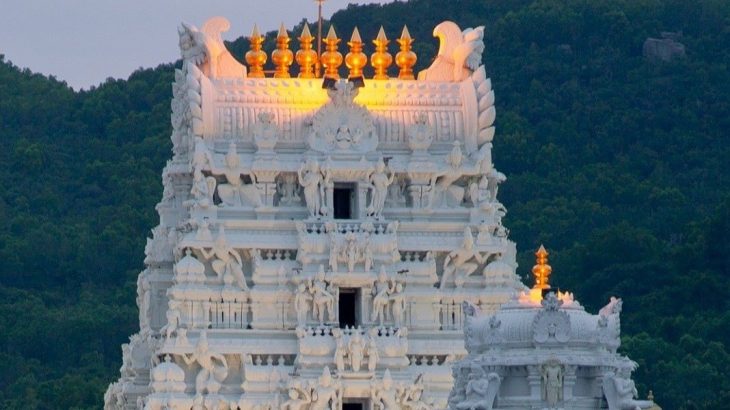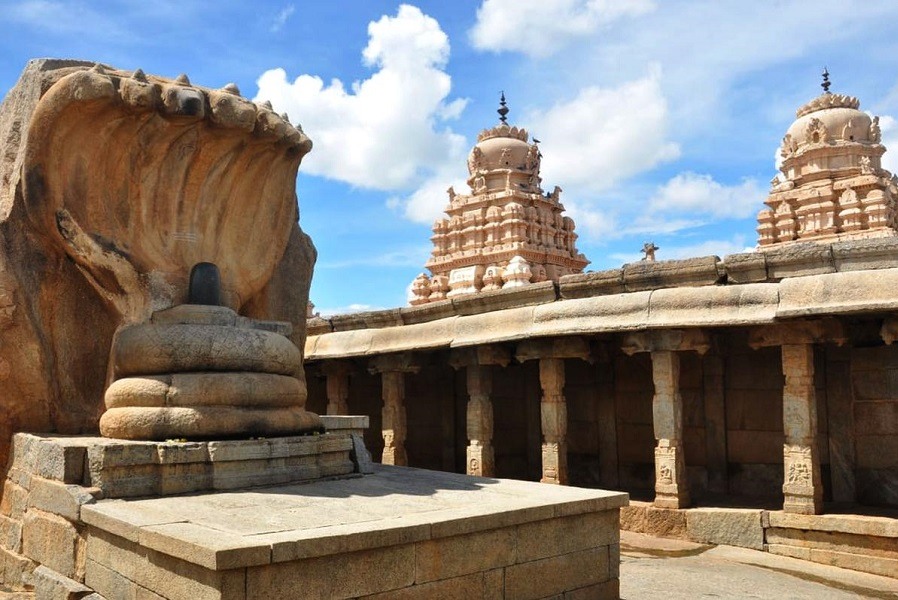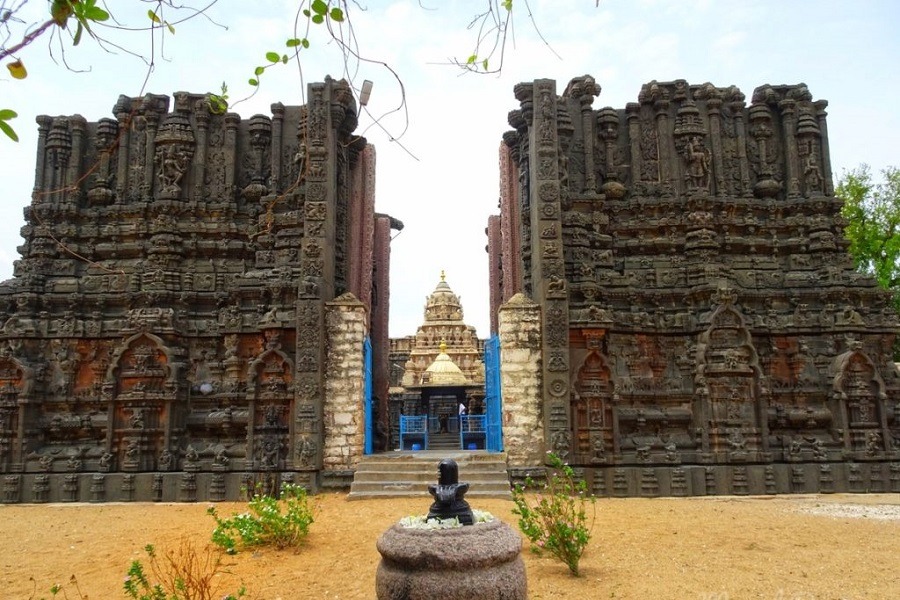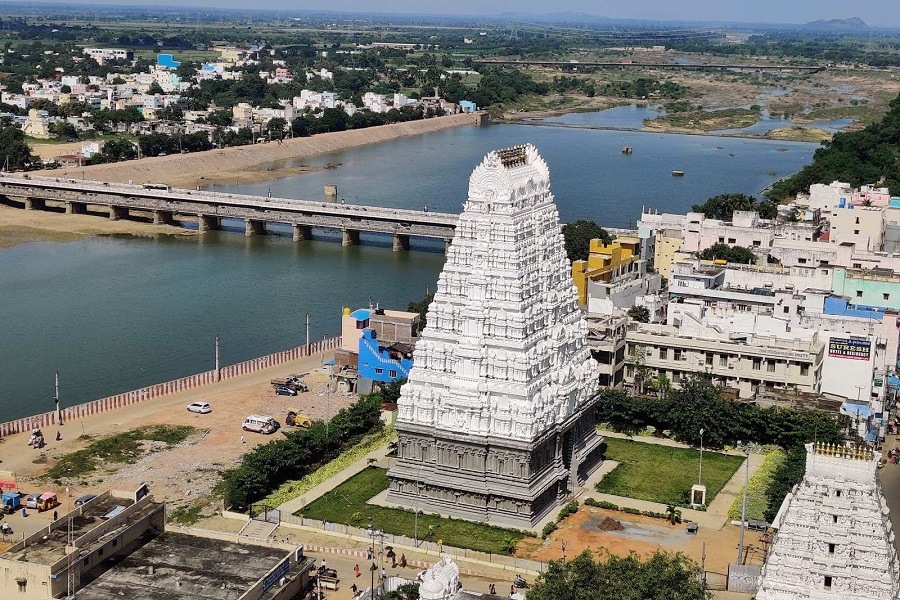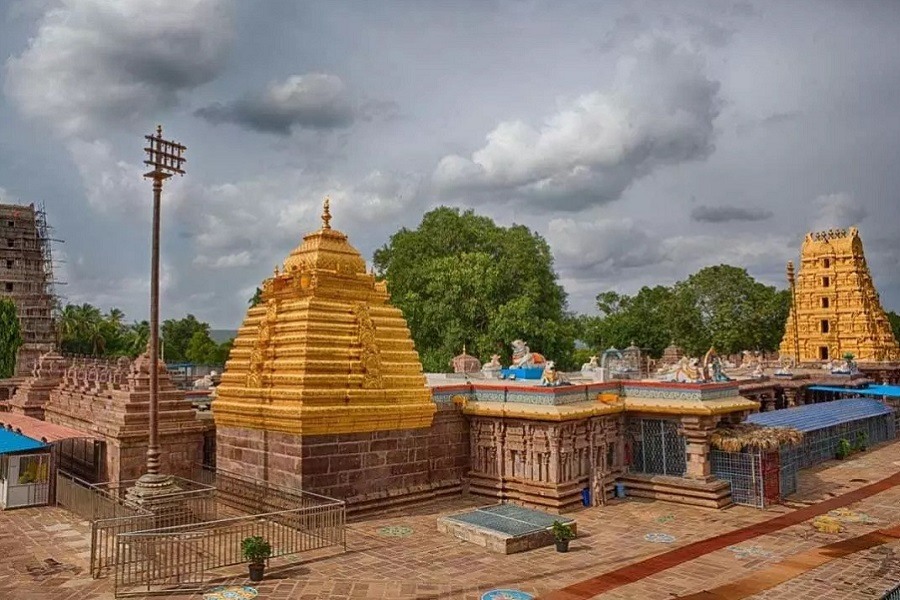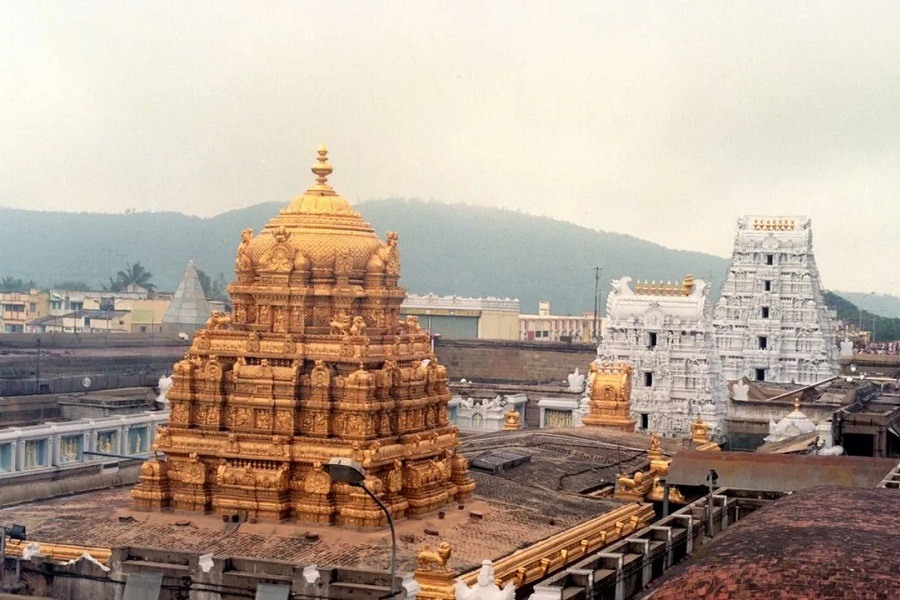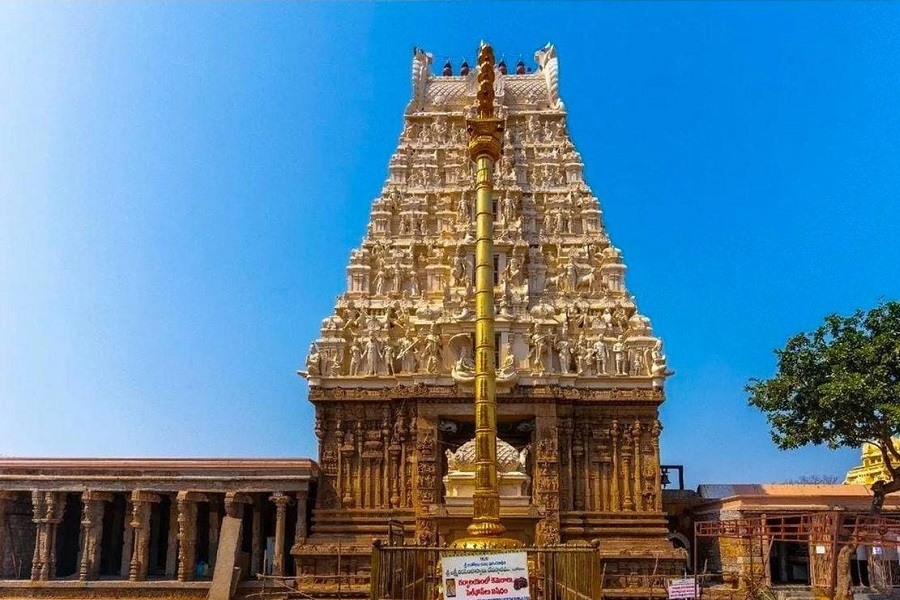Established in 1336 by Harihara I and Bukka Raya I of the Sangama dynasty, the Vijayanagara Empire was a medieval Hindu empire that ruled much of southern India. The empire, at its zenith, subjugated nearly all of the ruling dynasties in Southern India and pushed the Turco-Persian sultans of the Deccan beyond the Tungabhadra-Krishna River doab region. Additionally, they expanded their territory by annexing the Gajapati Empire (Odisha) up to the Krishna River.
The Vijayanagara Empire’s influence endured for over 300 years, particularly in the realm of architecture. The rulers of Vijayanagara constructed splendid temples, palaces, and civic structures throughout Southern India. The most famous being the group at Hampi, which includes the Virupaksha temple and Vittala temple, among the must-include places in Hampi tour packages. Furthermore, the rulers also built numerous temples in Andhra Pradesh renowned for their architectural magnificence. Below is a compilation of five grand temples constructed by the Vijayanagara rulers, distinct from the temples at Hampi as part of South India tour packages.
Veerabadra Temple, Lepakshi
The Veerabhadra Temple in Lepakshi, Andhra Pradesh, is a tribute to Lord Shiva and a remarkable display of the architectural and artistic excellence of the Vijayanagara Empire. Constructed in the 16th century under the rule of Vijayanagara King Aliya Rama Raya, this temple is celebrated for its detailed carvings, impressive architecture, and significant cultural value. Situated on a rocky hill, the temple complex consists of three primary shrines dedicated to Lord Veerabhadra, Goddess Bhadrakali, and Lord Papanatha. Inside the sanctum sanctorum stands a grand 15-foot-tall statue of Lord Veerabhadra, embellished with various ornaments and weapons.
The temple’s most notable features include its intricately carved pillars, each portraying scenes from Hindu mythology, epic tales, and celestial entities. Of special mention are the pillars in the Ranga Mandapa, with the hanging pillar showcasing architectural brilliance. Additionally, the temple’s ceiling is adorned with exquisite mural paintings depicting stories from the Ramayana, Mahabharata, and Puranas.
Book Here : Lepakshi tour packages
Bugga Ramalingeswara Temple,Tadipatri
Situated on the banks of the Penna River, the Bugga Ramalingeswara Swamy Temple in Tadipatri, Anantapur district, Andhra Pradesh, is a renowned temple from the Vijayanagara era. Constructed by local chieftain Ramalinga Nayudu in the 16th century, this temple is dedicated to Lord Shiva. The temple derives its name from a continuous underground stream (Bugga in Telugu) that flows into the sanctum sanctorum where the Lingam is enshrined. Known as one of the top places to visit in Anantapur, the temple is famous for its imposing gopuram, intricate pillars, and detailed sculptures.
Inside the sanctum sanctorum lies the main deity, Lord Ramalingeswara, in the form of a lingam, believed to be self-manifested (Swayambhu). The temple complex also includes a large Nandi (bull), the divine mount of Lord Shiva. The exquisite carvings on the temple wall portray scenes from Hindu mythology, featuring gods, goddesses, celestial beings, and mythological creatures.
Must Visit : Tourist Places near Bangalore
Srikalahasteeswara Temple, Srikalahasti
Dedicated to Lord Shiva, the Srikalahasteeswara Temple, located in Srikalahasti, Andhra Pradesh, is one of the most impressive Siva temples in South India, and among the top places to visit in Srikalahasti. Constructed during the 12th century under the Chola dynasty’s patronage, this ancient Shiva temple boasts impressive outer walls and 4 gopuras built during the period of Sri Veera Narasimharaya of Vijayanagara Kingdom. The main gopura and the 100 pillars mandapa were added by Krishna Devaraya, the renowned Vijayanagara king, in 1516. Known for its architectural splendor and spiritual importance, Srikalahasti Temple is considered one of the Pancha Bhoota Sthalas of Lord Shiva. Other Pancha Bhoota Sthalas include Tiruvannamalai, Thiruvanaikaval, Chidambaram, and Kanchipuram, among the top places to visit near Chennai. Representing Vayu, the Element of Air, this temple is also linked to Rahu and Ketu, two celestial bodies in Indian astrology. It is believed that a visit to this temple can alleviate the adverse effects of having Rahu in unfavorable positions in one’s horoscope.
Book Here : Andhra Tour Packages
Sri Mallikarjuna Temple, Srisailam
Dedicated to Lord Shiva, the Mallikarjuna Temple in Srisailam holds immense religious significance as it is considered one of the 12 Jyotirlingas and one of the 18 Sakti Peethas. During the reign of the Kakatiya Dynasty, Prataparudra made significant efforts to improve and maintain the temple by granting Paraganas for its upkeep. The period of the Reddy Kings is often referred to as the Golden Age of Srisailam, as they all contributed to the service and development of this temple.
The Vijayanagara kings also played a crucial role in preserving, enhancing, and promoting the Mallikarjuna Temple, one of the must-visit places near Hyderabad, as a center of religious worship. Their contributions include the construction of the Mukhamantapam and a Gopuram on the southern side of the temple. In the 15th century, Sri Krishna Devaraya constructed the Rajagopuram on the eastern side and Salumantapas on both sides of the temple. Additionally, they generously endowed the temple with land grants, financial resources, and precious jewels, ensuring its continued prosperity and sustenance. The history and legacy of the Mallikarjuna Temple have been deeply influenced by these rulers.
Book Here : Srisailam tour packages
Sri Venkateshwara Temple, Tirumala
The Lord Venkateswara Temple, situated on the Tirumala hills in Andhra Pradesh, holds great significance as a pilgrimage site in India and is counted among the wealthiest temples worldwide. While the temple was initially built by the Tamil king Thondaimaan, its development was greatly influenced by various dynasties including the Pallavas of Kanchipuram, Cholas of Tanjore, Pandyas of Madurai, and Vijayanagara Kings. Notably, Sri Krishna Devaraya of the Vijayanagara Empire played a significant role in the temple’s growth, maintenance, and support, elevating its status as a prominent religious hub. Under his patronage, additional gopurams, prakarams (enclosures), pathways, and water tanks were constructed, enhancing the temple’s architectural features. Within the temple premises, one can also find statues of Sri Krishna Devaraya and his spouses. It is one of the prominent places to visit near Tirupati.
Book Here : Tirumala Tour Packages
Ahobilam Temples
Our list is incomplete without mentioning the temples of Upper Ahobilam & Lower Ahobilam. The Lower Ahobilam Temple, dedicated to Lord Narasimha and constructed in the Vijayanagara architectural style, comprises a Sanctum, a Mukhamantapam, and a Rangamantapam adorned with exquisite sculptures on the pillars. The depiction of Narasa Nayaka from the Vijayanagara Empire within the temple is truly captivating. Outside the temple walls, a tall Jayasthambham stands in the spacious courtyard, symbolizing the triumph of Krishna Devaraya. Among the top places to visit near Vijayawada, Upper Ahobilam houses the primary shrine known as Ahobaleswar, which is the oldest among the nine Narasimha temples in Ahobilam. The Vijayanagara rulers generously bestowed land, wealth, and jewels upon the Ahobilam temples, ensuring financial support for their upkeep, daily rituals, and offerings.
Book Here : Ahobilam Tour Packages
